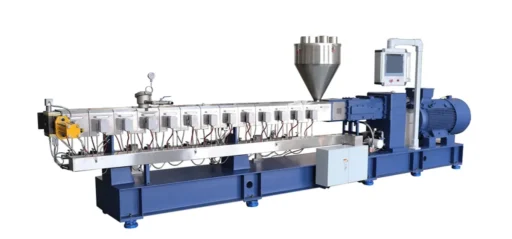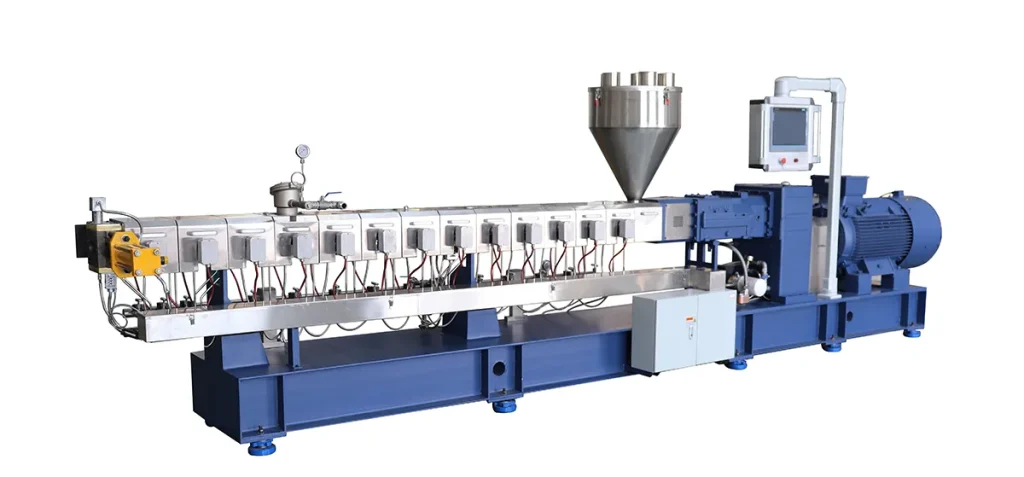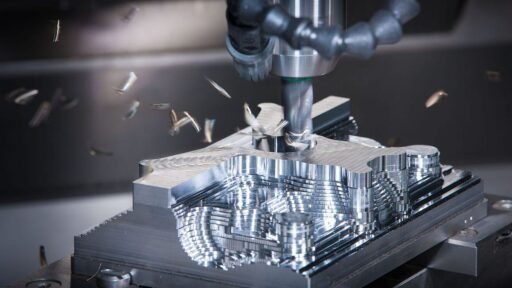Innovations in Plastics Extrusion Technology
The field of plastics extrusion has witnessed significant advancements in recent years, driven by the need for improved efficiency, sustainability, and product quality. These innovations have revolutionized the industry, enabling manufacturers to produce a wider range of products with enhanced properties and reduced environmental impact.
One of the most notable developments in plastics extrusion technology is the integration of Industry 4.0 principles. This digital transformation has led to the creation of smart extrusion systems that leverage data analytics, artificial intelligence, and machine learning to optimize production processes. By collecting and analyzing real-time data from various sensors and control systems, these smart extruders can automatically adjust operating parameters to maintain consistent product quality and maximize efficiency. This level of automation not only reduces human error but also allows for predictive maintenance, minimizing downtime and improving overall equipment effectiveness.
In addition to smart technologies, there has been a growing focus on sustainability in plastics extrusion. Manufacturers are increasingly adopting eco-friendly materials and processes to reduce their environmental footprint. This has led to the development of extruders capable of processing biodegradable and recycled plastics, as well as the implementation of energy-efficient systems that minimize waste and energy consumption. Moreover, advanced recycling technologies have been integrated into extrusion lines, allowing for the in-line recycling of scrap material and reducing the overall waste generated during production.
Another significant innovation in plastics extrusion is the development of multi-layer and co-extrusion technologies. These advanced techniques allow for the production of complex products with multiple layers of different materials, each contributing specific properties to the final product. This has opened up new possibilities in packaging, medical devices, and automotive applications, where combinations of materials can provide enhanced barrier properties, strength, and functionality. Furthermore, the advent of micro-extrusion technology has enabled the production of ultra-small components and intricate structures, finding applications in fields such as medical devices and microfluidics.
Advancements in die design and flow simulation software have also played a crucial role in improving plastics extrusion processes. Sophisticated computer-aided engineering tools now allow manufacturers to optimize die designs and predict material flow behavior with unprecedented accuracy. This has led to the development of more efficient dies that produce higher quality products with reduced material waste and energy consumption. Additionally, these simulation tools have significantly reduced the time and cost associated with die development and process optimization.
The integration of additive manufacturing technologies with plastics extrusion has opened up new possibilities for product design and customization. 3D printing techniques are now being used to create complex die geometries and tooling components that would be difficult or impossible to manufacture using traditional methods. This has enabled the production of highly customized and intricate extrusion profiles, expanding the range of applications for extruded plastic products.
Furthermore, the development of high-performance materials and additives has expanded the capabilities of plastics extrusion. New polymer blends and composites with enhanced properties such as improved strength, heat resistance, and conductivity have been formulated specifically for extrusion processes. These materials have enabled the production of extruded products that can replace traditional materials in various applications, leading to lighter, more durable, and cost-effective solutions.
As the plastics extrusion industry continues to evolve, we can expect to see further innovations that address the growing demands for sustainability, efficiency, and product performance. The integration of advanced technologies, coupled with ongoing research and development efforts, will undoubtedly lead to new breakthroughs in materials, processes, and applications, solidifying the position of plastics extrusion as a critical manufacturing technology for the future.
Maintenance Tips for Prolonging Extruder Lifespan
Proper maintenance of plastics extruders is crucial for ensuring optimal performance, prolonging equipment lifespan, and minimizing costly downtime. A well-maintained extruder not only operates more efficiently but also produces higher quality output. To achieve these benefits, it is essential to implement a comprehensive maintenance program that addresses various aspects of the extrusion machine.
One of the most critical maintenance tasks is regular cleaning of the extruder components. This includes the hopper, screw, barrel, and die. Accumulated residue and contaminants can lead to degradation of materials, inconsistent output, and potential damage to the machine. It is advisable to perform a thorough cleaning at scheduled intervals, depending on the type of materials processed and the frequency of use. Additionally, implementing a purging routine between material changes can help prevent cross-contamination and reduce the buildup of residual materials.
Proper lubrication is another vital aspect of extruder maintenance. Moving parts, such as bearings, gears, and thrust assemblies, require regular lubrication to reduce friction and wear. It is important to use the appropriate lubricants as specified by the manufacturer and to adhere to recommended lubrication schedules. Over-lubrication can be just as detrimental as under-lubrication, so it is crucial to follow proper procedures and quantities.
Monitoring and maintaining correct operating temperatures is essential for both the quality of the extruded product and the longevity of the machine. Regular calibration of temperature sensors and controllers ensures accurate readings and helps prevent overheating or underheating of the extruder zones. It is also important to inspect and maintain heating elements, checking for any signs of wear or damage that could lead to inconsistent heating or potential failure.
The screw and barrel assembly is at the heart of the extrusion process and requires special attention. Regular inspection of the screw for signs of wear, such as reduced flight depth or damage to the surface, is crucial. The barrel should also be checked for signs of wear or scoring. Timely replacement of worn components can prevent more severe damage and ensure consistent product quality.
Electrical systems play a critical role in the operation of modern extruders. Regular inspection and maintenance of electrical connections, motors, and control systems can prevent unexpected failures and ensure safe operation. This includes checking for loose connections, worn insulation, and proper functioning of safety devices.
Implementing a preventive maintenance schedule is key to prolonging the lifespan of an extruder. This involves regular inspections, component replacements, and adjustments based on manufacturer recommendations and operational experience. Keeping detailed maintenance records can help identify recurring issues and optimize maintenance intervals.
Proper training of operators and maintenance personnel is essential for effective extruder maintenance. Ensuring that staff are knowledgeable about the machine’s operation, potential issues, and proper maintenance procedures can significantly contribute to the longevity of the equipment.
In addition to regular maintenance, it is important to address any issues promptly when they arise. Ignoring minor problems can lead to more significant failures and costly repairs. Establishing a system for reporting and addressing maintenance issues can help ensure timely resolution of problems.
Finally, using high-quality replacement parts and materials is crucial for maintaining the performance and longevity of the extruder. While it may be tempting to opt for cheaper alternatives, using OEM or approved aftermarket parts can help ensure proper fit, function, and durability.
By implementing these maintenance practices, plastics manufacturers can significantly extend the lifespan of their extrusion equipment, improve operational efficiency, and maintain consistent product quality. Regular maintenance not only prevents unexpected breakdowns but also contributes to a safer working environment and can lead to substantial cost savings in the long run.
Optimizing Extruder Performance for Different Plastics
Optimizing extruder performance for different plastics is a critical aspect of the extrusion process that requires careful consideration of various factors. The efficiency and quality of the final product largely depend on how well the extruder is configured to handle specific plastic materials. To achieve optimal performance, operators must understand the unique characteristics of each plastic type and adjust the extruder parameters accordingly.
One of the primary considerations when optimizing extruder performance is the selection of the appropriate screw design. Different plastics have varying melting points, viscosities, and molecular structures, which necessitate specific screw configurations. For instance, high-density polyethylene (HDPE) typically requires a screw with a longer compression zone and a higher compression ratio compared to low-density polyethylene (LDPE). This is because HDPE has a higher melting point and requires more mechanical energy to achieve proper melting and homogenization.
In addition to screw design, temperature control plays a crucial role in optimizing extruder performance. Each plastic material has an ideal processing temperature range, and maintaining the correct temperature profile throughout the extruder barrel is essential for achieving consistent melt quality. For example, polyvinyl chloride (PVC) is sensitive to high temperatures and may degrade if overheated, while engineering plastics like polyamides (nylons) often require higher processing temperatures to ensure proper melting and flow characteristics.
Furthermore, the feed section of the extruder must be optimized to ensure a steady and consistent supply of plastic material to the screw. This involves selecting the appropriate hopper design and feed throat configuration based on the plastic’s bulk density and flow properties. For materials with poor flow characteristics, such as powders or flakes, the use of force-feeding mechanisms or specialized hopper designs may be necessary to prevent bridging and ensure a consistent feed rate.
Proper venting is another critical aspect of optimizing extruder performance, particularly for hygroscopic materials or plastics that tend to release volatile compounds during processing. Adequate venting helps remove moisture and trapped gases from the melt, preventing defects in the final product such as bubbles or surface imperfections. The location and design of vent ports should be carefully considered based on the specific plastic being processed and the desired product characteristics.
Die design and cooling systems also play significant roles in optimizing extruder performance for different plastics. The die geometry must be tailored to the rheological properties of the specific plastic material to achieve the desired product shape and dimensions. Additionally, the cooling system should be designed to provide uniform and controlled cooling, taking into account the thermal properties of the plastic and the desired product characteristics.
Operators must also consider the impact of additives and fillers on extruder performance. Many plastics are compounded with various additives to enhance their properties or achieve specific characteristics in the final product. These additives can significantly affect the processing behavior of the plastic, requiring adjustments to extruder parameters such as screw speed, temperature profile, and pressure settings.
Finally, optimizing extruder performance involves continuous monitoring and adjustment of process parameters. Advanced control systems and sensors can provide real-time data on critical variables such as melt temperature, pressure, and viscosity, allowing operators to make informed decisions and maintain consistent product quality. Regular maintenance and cleaning of the extruder components are also essential to prevent issues such as material degradation or contamination, which can negatively impact performance.
In conclusion, optimizing extruder performance for different plastics requires a comprehensive understanding of material properties, equipment capabilities, and process dynamics. By carefully considering factors such as screw design, temperature control, feeding mechanisms, venting, die design, and cooling systems, operators can achieve optimal performance and produce high-quality extruded products across a wide range of plastic materials.
Troubleshooting Common Extrusion Machine Issues
Extrusion machines are complex systems that can encounter various issues during operation. Identifying and resolving these problems promptly is crucial for maintaining production efficiency and product quality. This section will explore some of the most common issues faced by plastics extruders and provide guidance on how to troubleshoot them effectively.
One of the most frequent problems encountered in extrusion processes is inconsistent output. This can manifest as variations in the extruded product’s dimensions, surface finish, or overall quality. To address this issue, operators should first check the feed system for any blockages or irregularities in material flow. Additionally, examining the temperature profile along the barrel and die can help identify any deviations from the optimal settings. Adjusting these parameters may help stabilize the output and improve consistency.
Another common issue is the presence of contaminants or impurities in the extruded product. This can result from various factors, including contaminated raw materials, inadequate purging between material changes, or wear and tear on machine components. To resolve this problem, it is essential to implement a thorough cleaning and maintenance routine. This should include regular purging of the system, inspection of screws and barrels for signs of wear, and careful screening of raw materials before use.
Extruders may also experience issues related to melt temperature control. Fluctuations in melt temperature can lead to inconsistencies in product quality and processing difficulties. To address this, operators should first verify that all heating elements and temperature sensors are functioning correctly. It may also be necessary to adjust the screw speed or barrel temperature profile to achieve better temperature control throughout the extrusion process.
Pressure fluctuations within the extruder can cause significant problems, including inconsistent output and potential damage to machine components. These fluctuations may be caused by variations in material feed, improper screw design, or issues with the die and downstream equipment. To troubleshoot pressure-related problems, operators should carefully monitor the pressure readings at various points in the system and make adjustments to screw speed, material feed rate, or die design as necessary.
Die buildup and material degradation are additional challenges that extruder operators may face. These issues can result in poor product quality and reduced production efficiency. Regular die cleaning and maintenance are essential for preventing buildup, while optimizing processing temperatures and residence times can help minimize material degradation. In some cases, it may be necessary to consider alternative materials or additives to improve processing stability and reduce the likelihood of these issues occurring.
Screw wear is another common problem that can significantly impact extrusion performance. As screws wear over time, their ability to efficiently convey and mix materials may be compromised, leading to reduced output and quality issues. Regular inspection and measurement of screw dimensions can help identify wear before it becomes a significant problem. When wear is detected, operators should consider replacing the screw or implementing a refurbishment program to restore its original performance characteristics.
Electrical and control system issues can also affect extrusion machine performance. These may include faulty sensors, malfunctioning control panels, or problems with motor drives. To troubleshoot these issues, it is essential to have a thorough understanding of the machine’s electrical systems and to perform regular maintenance and calibration of control components. In some cases, it may be necessary to consult with the equipment manufacturer or a qualified technician to resolve complex electrical problems.
By understanding and addressing these common extrusion machine issues, operators can maintain optimal performance and product quality. Regular maintenance, careful monitoring of process parameters, and prompt attention to any deviations from normal operation are key to successful troubleshooting and long-term equipment reliability. As extrusion technology continues to evolve, staying informed about new troubleshooting techniques and best practices will be essential for maximizing the efficiency and effectiveness of plastics extrusion operations.
Types of Plastic Extrusion Processes
Plastic extrusion is a versatile manufacturing process that plays a crucial role in producing a wide range of products across various industries. This section will explore the different types of plastic extrusion processes, each tailored to specific applications and material requirements.
The most common type of plastic extrusion is profile extrusion, which is used to create long, continuous shapes with consistent cross-sections. This process is ideal for manufacturing items such as window frames, pipes, and trim pieces. In profile extrusion, molten plastic is forced through a die with a specific shape, and the extruded material is then cooled and cut to the desired length. This method allows for the production of complex shapes with high precision and efficiency.
Another widely used extrusion process is film extrusion, which is employed to produce thin, flexible sheets of plastic. This technique is essential in the packaging industry, where it is used to create products such as plastic bags, food wraps, and agricultural films. Film extrusion can be further divided into blown film extrusion and cast film extrusion. In blown film extrusion, the molten plastic is extruded vertically into a bubble, which is then cooled and collapsed to form a thin film. Cast film extrusion, on the other hand, involves extruding the plastic onto a chilled roller, resulting in a flat sheet with uniform thickness.
Sheet extrusion is similar to film extrusion but produces thicker plastic sheets used in applications such as signage, automotive components, and thermoforming. This process typically involves extruding the molten plastic through a flat die onto a series of rollers that cool and shape the material into the desired thickness and width.
For applications requiring hollow profiles, such as pipes and tubing, tube extrusion is the preferred method. This process involves extruding the plastic through an annular die, which creates a continuous hollow shape. Tube extrusion can be further customized by incorporating additional features such as multiple layers or reinforcing materials.
Coextrusion is a specialized extrusion process that allows for the simultaneous extrusion of multiple materials or colors. This technique is particularly useful in creating products with specific performance characteristics or aesthetic qualities. Coextrusion can be applied to various extrusion processes, including profile, film, and sheet extrusion, enabling the production of multi-layered or multi-colored products in a single operation.
Foam extrusion is another important variant of the extrusion process, used to create lightweight, insulating materials. In this method, a blowing agent is introduced into the molten plastic, causing it to expand and create a cellular structure as it exits the die. Foam extrusion is commonly used in the production of insulation materials, packaging foam, and lightweight structural components.
Wire and cable coating extrusion is a specialized process used to apply protective and insulating layers to electrical wires and cables. This technique involves extruding a thin layer of plastic around a metal conductor, providing electrical insulation and mechanical protection.
Lastly, extrusion coating is a process that combines extrusion with lamination to apply a thin layer of plastic onto another material, such as paper, fabric, or metal foil. This method is widely used in the packaging industry to create moisture-resistant or heat-sealable materials.
Each of these extrusion processes offers unique advantages and is suited to specific applications. The choice of extrusion method depends on factors such as the desired product characteristics, material properties, and production requirements. As technology continues to advance, new extrusion techniques and innovations are being developed, further expanding the capabilities and applications of plastic extrusion in various industries.
Essential Components of a Plastics Extruder
A plastics extruder is a complex machine designed to melt, mix, and shape plastic materials into various products. To understand the functionality of this essential equipment in the plastics industry, it is crucial to examine its key components. At the heart of every plastics extruder lies the screw, a helical metal shaft that rotates within a cylindrical barrel. This screw is responsible for conveying, melting, and mixing the plastic material as it moves through the machine.
The barrel, which houses the screw, is typically made of hardened steel and features a smooth interior surface to facilitate the flow of molten plastic. It is often equipped with heating elements and cooling systems to maintain precise temperature control throughout the extrusion process. These temperature control mechanisms are vital for achieving optimal melting and flow characteristics of the plastic material.
At the feed end of the extruder, a hopper is installed to introduce the raw plastic material into the machine. The hopper is designed to maintain a consistent flow of material into the barrel, ensuring a steady supply for the extrusion process. Some advanced systems may incorporate auxiliary feeding devices or dosing units to enhance the accuracy and control of material input.
As we move along the extruder, we encounter the drive system, which is responsible for rotating the screw. This system typically consists of an electric motor, a gearbox, and a thrust bearing. The drive system must be capable of generating sufficient torque to overcome the resistance of the molten plastic and maintain consistent screw rotation speeds.
Near the discharge end of the extruder, we find the breaker plate and screen pack. These components serve multiple purposes, including filtering out impurities, creating back pressure, and improving the homogeneity of the melt. The breaker plate is a thick metal disc with numerous small holes, while the screen pack consists of wire mesh screens of varying sizes.
Following the breaker plate and screen pack is the die, which gives the final shape to the extruded product. The die design varies depending on the desired output, whether it be a simple profile, sheet, or more complex shapes. Some extrusion systems may incorporate additional components such as co-extrusion adapters or multi-manifold dies to produce multi-layer or multi-component products.
To ensure optimal performance and product quality, extruders are equipped with various sensors and control systems. These may include pressure transducers, temperature sensors, and melt flow indicators. These instruments provide real-time data to the control system, allowing for precise adjustments to process parameters.
The control panel serves as the central hub for monitoring and adjusting the extrusion process. Modern extruders often feature advanced touchscreen interfaces and computer-controlled systems that allow operators to fine-tune parameters such as screw speed, temperature profiles, and material feed rates.
Auxiliary equipment, while not always considered core components of the extruder itself, plays a crucial role in the overall extrusion process. This may include downstream equipment such as cooling tanks, haul-off units, and cutting or winding systems, depending on the specific application and product requirements.
In conclusion, a plastics extruder is a sophisticated piece of machinery comprised of numerous interdependent components. From the screw and barrel to the die and control systems, each element plays a vital role in transforming raw plastic materials into finished products. Understanding these essential components is crucial for anyone involved in plastics extrusion, whether as an operator, engineer, or industry professional. By mastering the intricacies of these components and their interactions, one can optimize the extrusion process, improve product quality, and drive innovation in plastic manufacturing.






